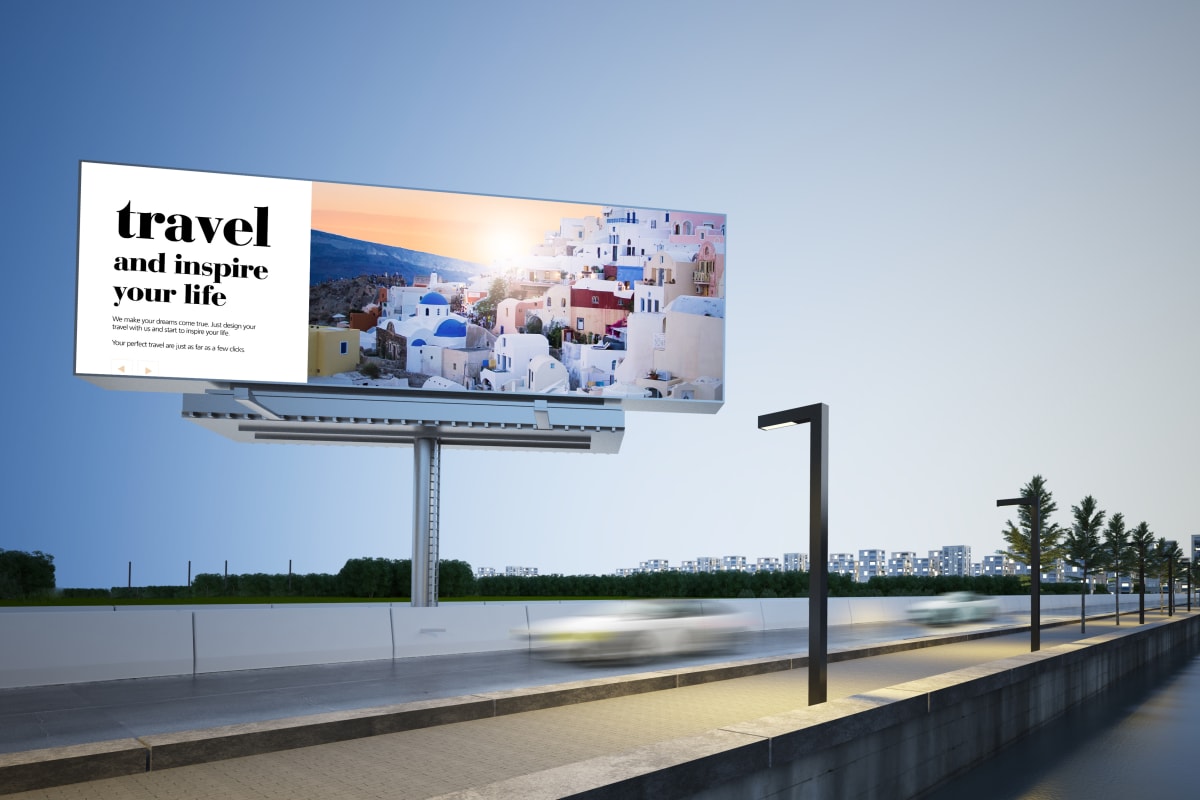Although we are moving more toward a world of digital advertising, brick-and-mortar businesses must still rely on physical signage to help bring in customers. Signage is one of the most important marketing strategies for local businesses, as it can be used for both branding and advertising. As with online media, there are a few basic traits of signage that you should be aware of.
Of course, you must follow local laws on where you can place signage (as well as size and other restrictions), but in general, there are a few common rules for business signage to keep in mind when trying to lure more customers to your place of business.
So what are these common rules and basic traits, and why is signage important to a business?
Location, Location, Location
Yes, location is extremely important. Where you place your signage is where you will be branded. The people who drive by that location will begin to know who you are and what you have to offer and also become your local clientele.
“Signs are among the most important elements of visual communication,” according to a 2012 study prepared by the Economics Center at the University of Cincinnati. The study also hammers home the importance of on-premises signage. “The visual communication provided by on-premises business signage is essential for the efficient function of our system of commerce and the success of many businesses.”
The 67-page study can be summed up with two main points about location. The first is, you must have signage in proximate location to your business, as most people shop where they live. The second is, you must have signage onsite so that people actually know you exist.
Still don’t think signage is important? A similar study conducted by FedEx showed that 76 percent of consumers visited a store they never knew existed based on a sign. Another 75 percent recommended a business based on signage alone.
Are you willing to ignore those numbers because you don’t want to place a sign in front of your business?
Yes, Size Matters
Size definitely matters when it comes to signage but not just the overall size of the sign. You also need to keep in mind the size of objects in the location of the sign and the size of the writing on the sign itself.
Bigger is not always better when it comes to signage. Sometimes having a sign that is too big can be a distraction and take away from your message. Imagine a large sign on the side of a building where you regularly commute. Would the sign on the side of the building be better than a smaller sign that is well-placed at an intersection? Probably not. In fact, the smaller sign would be better as people have to stop and look at it whenever they get to the intersection.
You also need to consider size restrictions where you post signs. Some cities are banning billboards in certain locations, so you need to be familiar with what you can and cannot display. In addition to local and state laws governing the size of signage, you also have to contend with federal regulations related to outdoor advertising.
The overall size of your signage is not as important as the size of the message within. According to the United States Sign Council (USSC), detecting signage can be complicated and is an art.
“Detecting and reading a roadside on-premises sign by a motorist involves a complex series of sequentially occurring events, both mental and physical,” writes the USSC in its guide on legibility rules. “They include message detection and processing, intervals of eye and/or head movement alternating between the sign and the road environment, and finally, active maneuvering of the vehicle as required in response to the stimulus provided by the sign.”
The size of the sign and the lettering actually cause people to either read your message or pass on by without ever knowing who you are.
Styles Make the Difference
There is a big debate going on regarding the use of digital signage:
• Is it worth the cost?
• Does it convert better than traditional signage?
• Can it be implemented into billboards and other outdoor signage?
The answer to all of these questions is “yes.”
Digital signage has taken over the advertising industry. Yes, there are still traditional billboards that require the pasting of banners, but digital billboards are slowly saturating the market. The cost to create an ad is less, as it can be done on a computer and does not require labor to climb and paste the signage.
With improvements to digital signage over the years, it is less expensive to maintain and easier to change. Imagine having a message that you paid good money for, only to go through a re-branding a month or two later. You’ll need to change all your signs, which will mean expenses related to creating, removing, and replacing your signs with your new message. Digital signage only requires a few keystrokes, and your message is changed.
Digital signage also helps with sizing and industry influences. “The recent rapid growth of digital signage is due to a confluence of factors: dramatic innovations, lower hardware and software costs, and greater integration and ease of use,” according to Pam Derringer in an article written for AVNetwork. “Signs aren’t just a few standard sized rectangles anymore,” she adds.
Final Word on Signage
It has more than been established that you must have signage. It is as important as a Website because it tells people who you are and where you are located. Signage is an advertising and branding tool that can generate an additional 75 percent to your customer base and referrals, according to numerous studies. Make sure to consider sizing and location in order to attract customers and use technology such as digital signage in order to keep up with industry changes.
Brian Horvath is a freelance writer from Michigan and founder of MyBusinessTalk. He is a journalism graduate and a regular contributor to numerous online magazines and journals.







